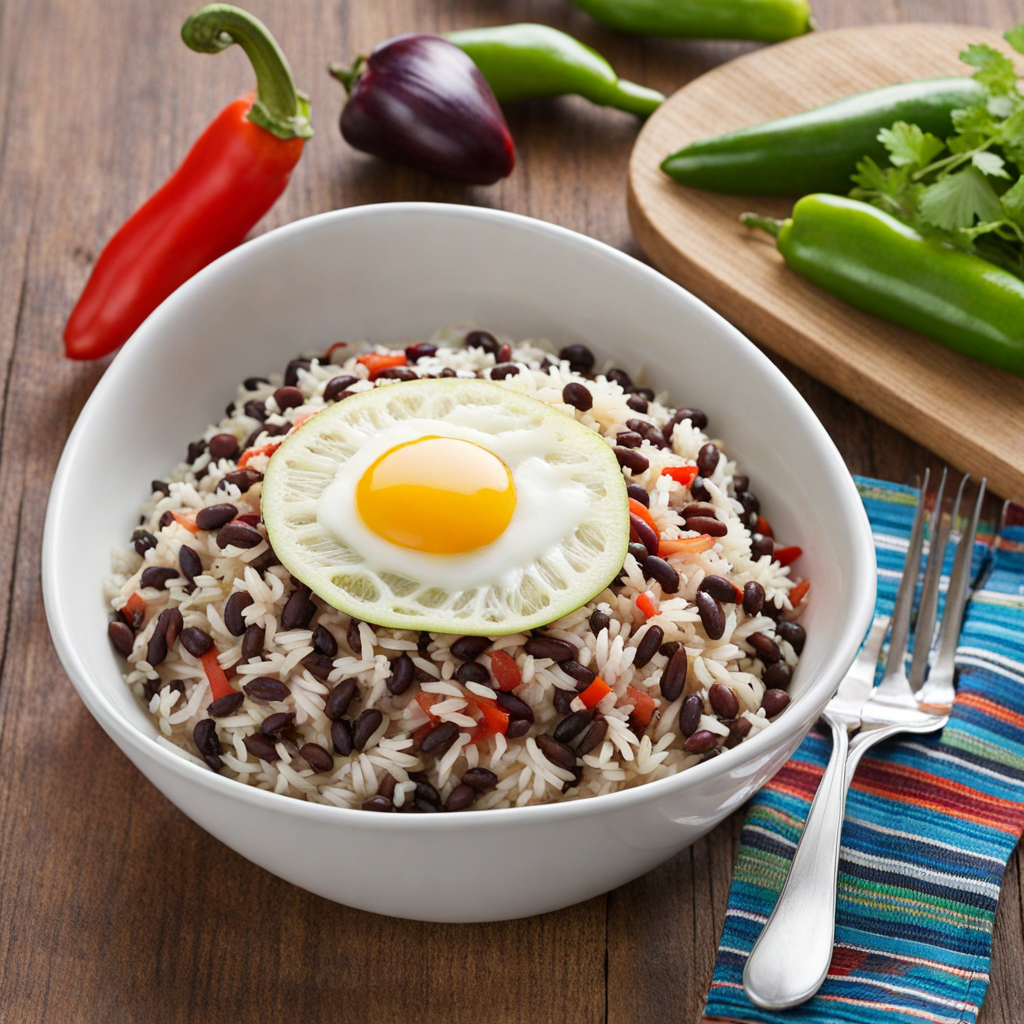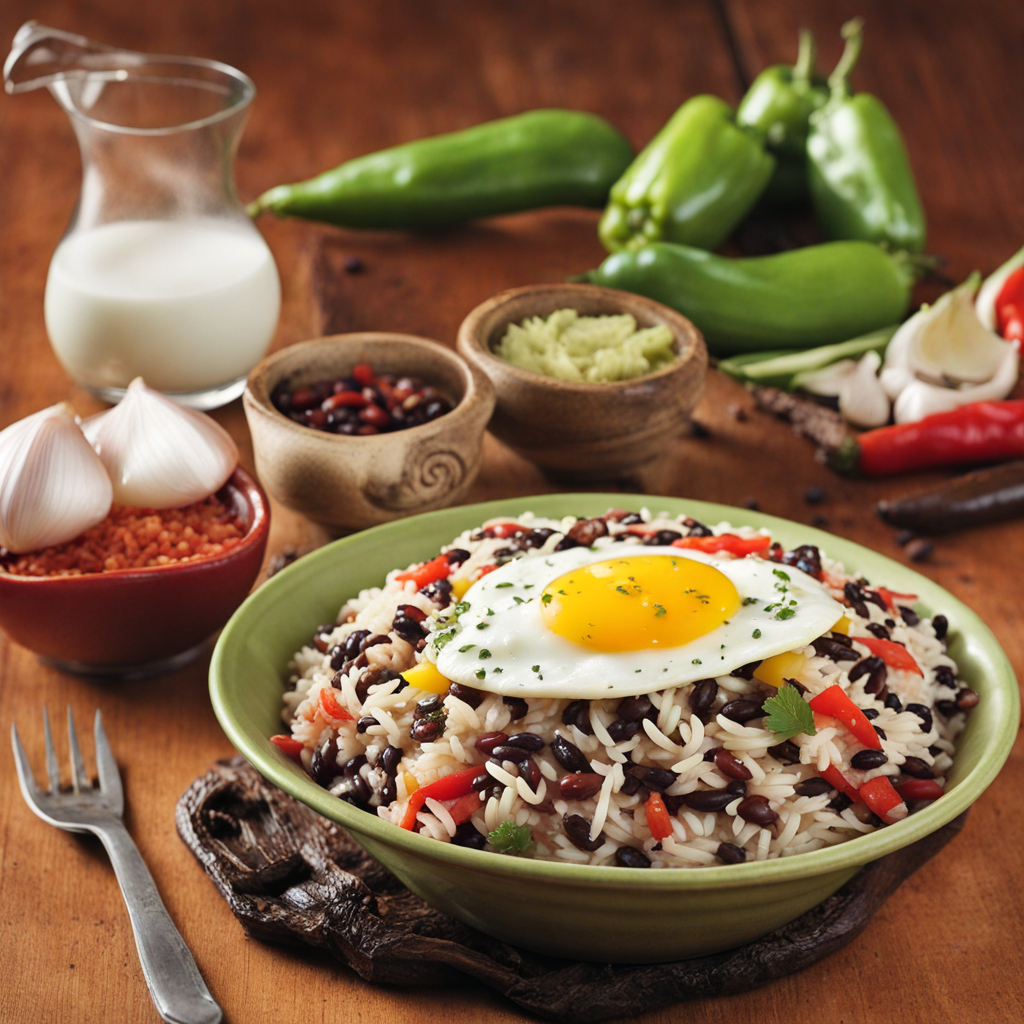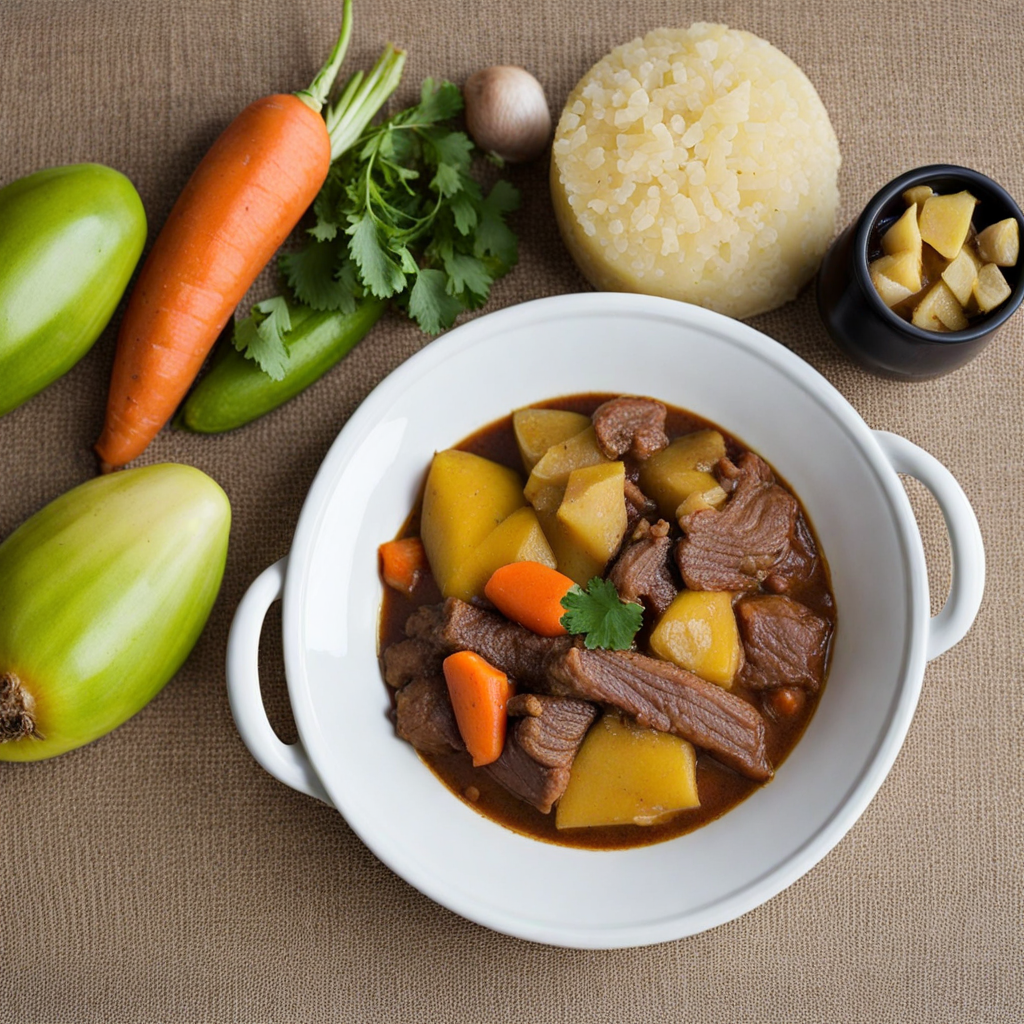Gallo Pinto
Gallo Pinto is a traditional Costa Rican dish that beautifully showcases the rich flavors and cultural heritage of the region. At its core, Gallo Pinto consists of a delightful combination of cooked rice and black beans, which are typically sautéed together with a blend of spices, including onions, bell peppers, and cilantro. The dish is often seasoned with a unique sauce called Salsa Lizano, a tangy condiment that adds depth and a slightly sweet flavor profile, making Gallo Pinto a true representation of Costa Rican culinary traditions. The texture of Gallo Pinto is a harmonious mix of the fluffy rice and tender beans, creating a satisfying bite with every spoonful. The vibrant colors of the dish, with the contrast of black beans against the white rice, make it visually appealing as well. Gallo Pinto is often served as a staple breakfast item, accompanied by fried eggs, avocado, or even plantains, but its versatility allows it to shine at any meal throughout the day. As you savor Gallo Pinto, you'll discover a taste that is both comforting and invigorating, embodying the essence of Costa Rican cuisine. The dish not only nourishes the body but also serves as a cultural experience, bringing people together around the table. With its simple yet flavorful combination of ingredients, Gallo Pinto is a must-try for anyone looking to explore the authentic tastes of Costa Rica.
How It Became This Dish
Gallo Pinto: The Heart of Costa Rican Cuisine Gallo Pinto, a vibrant and flavorful dish that embodies the spirit of Costa Rican cuisine, translates to "spotted rooster," aptly reflecting the dish's appearance with its speckled mix of rice and beans. As a staple food in Costa Rica, Gallo Pinto is not just a meal; it is a cultural symbol, a daily ritual, and a testament to the country’s agricultural heritage. Origins of Gallo Pinto The origins of Gallo Pinto are deeply rooted in the agricultural practices of Central America, particularly the regions that now comprise modern-day Costa Rica and Nicaragua. The dish is believed to have emerged in the 19th century, during a time when rice and beans were staples in the diets of rural communities across the region. Both ingredients have a long history in Central America, with beans being cultivated since ancient times by indigenous civilizations, and rice being introduced by Spanish colonizers in the 16th century. The combination of rice and beans became an economical and nutritious choice for many families, allowing them to stretch limited resources while providing essential proteins and carbohydrates. The dish was initially prepared as a simple, home-cooked meal, often featuring leftover rice and beans from previous meals. The recipe varied from household to household, influenced by local ingredients, personal preferences, and regional cooking traditions. Cultural Significance Gallo Pinto is more than just a dish; it is a cultural touchstone for Costa Ricans, or "Ticos," as they affectionately call themselves. Breakfast is the most common meal for Gallo Pinto, often served alongside eggs, fried plantains, and a cup of Costa Rican coffee. It serves as a hearty start to the day, fueling the workforce that drives the country’s economy. Historically, Gallo Pinto has been associated with the idea of "pura vida," a phrase that encapsulates the Costa Rican way of life, emphasizing simplicity, positivity, and appreciation for life’s small pleasures. Sharing a meal of Gallo Pinto with family or friends fosters community and connection, reinforcing the importance of social bonds in Tico culture. The dish also symbolizes the fusion of indigenous and Spanish culinary traditions, illustrating how Costa Rican cuisine has evolved over time. The use of local ingredients, such as cilantro, bell peppers, and onions, reflects the agricultural bounty of the region, while the cooking techniques showcase the influence of Spanish colonial practices. Regional Variations While Gallo Pinto is widely recognized as a Costa Rican dish, it is also a significant part of Nicaraguan cuisine, leading to friendly rivalry between the two nations over its origins and preparation methods. In Costa Rica, the dish is often prepared with a base of black beans, while Nicaraguans tend to use red beans. In Costa Rica, it is served with a liberal dash of Salsa Lizano, a unique, tangy sauce that adds depth of flavor and is practically a condiment of national pride. Regional variations exist even within Costa Rica. For instance, in the Caribbean coastal regions, Gallo Pinto may incorporate coconut milk and spices reflecting Afro-Caribbean influences, resulting in a dish with a tropical flair. In the mountainous regions, where different beans and herbs may thrive, you might find variations that incorporate local ingredients such as corn and different spices. Development Over Time Over the decades, Gallo Pinto has evolved from a humble, everyday meal to a celebrated dish that showcases Costa Rica’s culinary identity. As Costa Rica has developed into a popular tourist destination, Gallo Pinto has gained international recognition, appearing on menus in restaurants across the globe. It is often featured in cooking classes and culinary tours, where visitors learn about its preparation and cultural significance. The globalization of cuisine has also influenced how Gallo Pinto is prepared and consumed. Contemporary interpretations may include fusion elements, where chefs experiment with different spices, proteins, and cooking methods, allowing for creative takes on the traditional dish. However, the essence of Gallo Pinto remains unchanged; it is still a beloved staple that resonates with the hearts of Costa Ricans. Modern-Day Gallo Pinto Today, Gallo Pinto continues to hold a cherished place in the daily lives of Ticos. It is a common sight in homes, cafes, and restaurants, symbolizing comfort and tradition. Many Costa Ricans take pride in their unique family recipes for Gallo Pinto, often passed down through generations. The dish is not merely a meal; it embodies memories of childhood, family gatherings, and communal celebrations. In recent years, there has been a growing movement towards sustainability and organic farming in Costa Rica. This shift has led to an increased focus on locally sourced ingredients, which has further enhanced the quality and flavor of Gallo Pinto. Farmers markets and organic food initiatives have allowed consumers to connect with the origins of their food, adding another layer of appreciation for this beloved dish. Conclusion Gallo Pinto is more than just a combination of rice and beans; it is a dish steeped in history, culture, and community. Its journey from humble beginnings to a celebrated national dish reflects the resilience and creativity of Costa Rican cuisine. As it continues to evolve, Gallo Pinto remains a symbol of national pride, a connection to the land, and a testament to the rich culinary heritage of Costa Rica. Whether enjoyed at breakfast, lunch, or dinner, Gallo Pinto captures the essence of "pura vida," bringing people together over a plate of warmth and flavor.
You may like
Discover local flavors from Costa Rica







